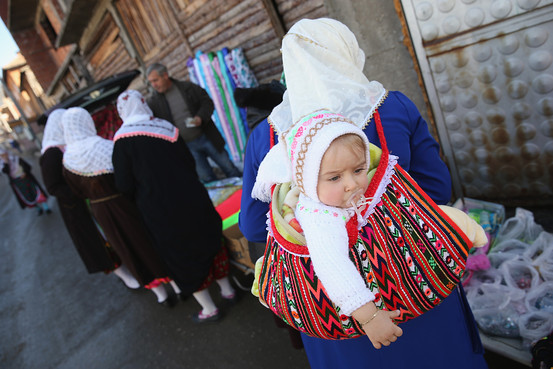
Maroon jersey peak for Ben Te’o
July 2, 2014
The gods of Yasukuni
July 2, 2014

In the winter months Ribnovo, Bulgaria, is bustling, but able-bodied villagers migrate abroad starting in the spring to western European countries where they find work in construction, agriculture, logistics, landscaping.
Getty Images
It’s fashionable to think of Europe’s economies as sclerotic and very slow to adjust to economic developments–certainly compared with the United States.
In part, the argument goes, the lack of a common language in Europe makes it hard for people to migrate from depressed economies to where the jobs are. By contrast, Americans are used to upping sticks and heading for new and greener pastures.
Except that’s not altogether true.

Population data for the European Union–where there are few legal barriers to migration–show some interesting trends for the past 35 years.
During the 1980s population growth was broadly equal in three major regions that now belong to the European Union–the formerly Communist Eastern Europe, including Slovenia and Croatia, but excluding East Germany; the rich north, including France but excluding Ireland; and the countries that suffered most from the euro zone crisis.
But once the Berlin Wall came tumbling down, so did populations in Eastern Europe as people across the region took the opportunity to flee crumbling economies. Nowhere was this migration in pursuit of economic opportunity more obvious than the flight of Polish workers, who were became a major part of the U.K.’s services boom in the years before the financial crisis. Of course, it wasn’t just emigration that caused a population collapse. Falling birth rates was also a significant factor. The combination of factors caused a major population collapse in some countries–for example, Bulgaria’s has slumped 19% since the end of Communism.
Whatever the causes, the population has declined across the European Union’s east by 6% since 1989, a period during which overall E.U. population grew 7%.
Another big population shift happened following the introduction of the single currency in 1999. Adopting the euro triggered booms across some of the single currency’s poorest countries–such as Portugal and Greece, the countries that suffered most from the bust that started in 2008. That boom was accompanied by a big population jump. In the decade following the birth of the euro, population grew by 8.3% across the crisis countries–notwithstanding some poor demographics and low birth rates. Population across the E.U. overall rose only 3.3% during the same period.
But that growth stopped with the crisis. Since 2009, crisis country populations have expanded proportionately less than in the E.U. overall.
Intriguingly, the flattening off of population growth in crisis countries seems to be accompanying a slowdown in shrinkage in the east. Perhaps it’s unsurprising that east European economies, led by Poland and Hungary have been relatively strong performers during the past year while the crisis countries are struggling to return to economic expansion.
The major demographic challenge the whole of the E.U. confronts, however, is population ageing. The proportion of people of working age relative to retirees is shrinking. And that’s something that can’t be resolved by migration within the European club, but, rather, needs immigration from abroad.


